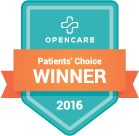There are many emotions around the opening up of our everyday lives again. Here are my thoughts.
The most common question I get is “Is ___ safe?” or “Will ___ be safe in the ___?” It’s a complex question to answer because it involves both a respect for public health recommendations and orders and your individual health status and tolerance for risk. So that is the process that I walk patients through to come to a decision. We often tend to see things as black and white and there is nothing black and white about personal and public health. There are no absolutes.
When you think about it, you have likely experienced this method of thinking in other decisions when it comes to your personal health. Your blood sugar is above range. What are the risks/benefits to using medication now vs working on diet & exercises vs doing nothing? What do you decide to do? You broke your arm. What are the chances of it healing on its own vs using a surgically placed pin? What do you decide to do? We have scientific knowledge of how the body works and scientific data on the effects of various interventions to guide us, but we don’t have absolute certainty on our individual outcome.
But there is added complexity here. We are not simply considering a treatment for a condition we know you already have. We are also considering your risk of getting it, the risk of other people in your community getting it from you and the health and viability of the entire healthcare system. Because of the novelty of COVID19, we don’t have the level of scientific data that we would prefer related to treatment options and outcomes. We haven’t had the testing and tracking at the population level, so we don’t have a good estimate on what your personal risk is of contracting it at any given time. And from a population health perspective, we have to consider not only your outcome, but the outcome of others in the community and our ability to treat a given population for any health concern with a functional healthcare system.
No wonder it’s a complicated topic! And when things get complicated, sometimes we are tempted to try to oversimplify. When the stress of uncertainty or fear sets in, we are tempted to oversimplify. The reality is that this is a constantly evolving situation that will continue to evolve based on the nature of the virus, your individual health decisions and population-based control measures. Some things to keep in mind…
Social distancing was never meant to eliminate the spread of the virus. It was simply meant to slow the spread. A main goal of this was to give the hospital system time to prepare for higher numbers of sick individuals, increase testing so that we can track risk better and increase protection supplies to help slow spread. This has been done to varying degrees in various areas.
There is no doubt that when reopening happens, we will experience an increase in cases proportionate to the level of additional exposures. Until enough people develop a natural immunity (get the virus and recover) or get a vaccine (a long way off), this will be the case.
There is no one way to eliminate risk. Even now you have some level of risk. Our continued goals are to keep our personal level of risk at a personally acceptable level and the population’s level of risk at a culturally acceptable level. We individually determine our personal risk tolerance with wise counsel. Our leaders determine our population’s acceptable level of risk based on wise counsel.
Our best means of decreasing individual exposure/infection that we can layer on top of one another to gain confidence in our safety are:
1 - Physical distancing (6 feet or more), either electively or by order
2 - Not touching contaminated surfaces, frequently washing shared surfaces
3 - Washing your hands frequently
4 - Not touching your face (eyes, nose, mouth)
5 - Wearing a mask with proper handling
Our best way of decreasing the population risk are:
1 - More testing (identifying current and past cases)
2 - Isolation of sick individuals
3 - Tracking and quarantining of exposed individuals
4 - Collective voluntary agreement or policies to order any of the above individual measures
So now we are back to the punchline...how you proceed revolves around a respect for public health recommendations and orders and your individual health status and tolerance for risk.
1 - Government orders are usually a minimal safe standard based on population status. Your decision may be more extreme. (Could be less also, but that would have ramifications of course.)
2 - Government health recommendations may be a higher safety standard. Your decision may be more or less extreme based on your Whole Health considerations - emotional, physical, spiritual, financial, relational, community concern, environment.
3 - Your individual health status and tolerance for risk. This requires that careful conversation about the status of your Whole Health and what your best efforts can be.
Does your physical health put you at higher risk for complications (based on age over 65), obesity, diabetes, lung, heart, kidney or liver disease immunocompromised status)?
Is your emotional health struggling despite your best attempts to adapt?
Financial health - What is the status of your basic resources - shelter, food, finances - and how is that affecting other areas?
Relational health - How much is your current level of connection with friends or family affecting your overall health? What is your level of concern for vulnerable populations in your community?
Is your current environment safe?
These are just some of the questions that might guide your decisions. The most important thing is to judge the situation from a place of calm wisdom - not fear, anger or rebellion. Seek wise counsel on what is best for you if you are struggling.
Be your best self - whatever that is.
Every single one of us has the same basic human concerns. Your Whole Health priorities are not necessarily the same as others, but everyone has these concerns. We truly are in this together, even though everyone’s individual situation is different.
Yes, there are basic governmental regulations that must be followed. Yes, our efforts affect those around us. But there is much freedom in what is best for you. You will see a lot of variation in how individuals, families, businesses and communities conduct themselves and that is okay!
You may not feel comfortable going back to work and choose to take a leave based on your risk status.
You may choose to add your siblings family into your “pod” of exposure, but continue as is otherwise.
You may return to work and commit to take extra protection and self-monitoring precautions when you are there and when you come home.
You may see your family doctor via telehealth, but see your counselor in person.
You may choose to continue to meet with your church group virtually, but meet a friend for coffee on the patio.
You may go into the grocery for the first time in six weeks with a mask. You may continue curbside pick up.
Whatever you choose today might change in two weeks or tomorrow and that is okay. The situation is evolving. Your best effort is evolving. Your resilience is evolving. Your confidence is evolving. Your wisdom is evolving. Your creativity is evolving.
Be your best self - whatever that is.







